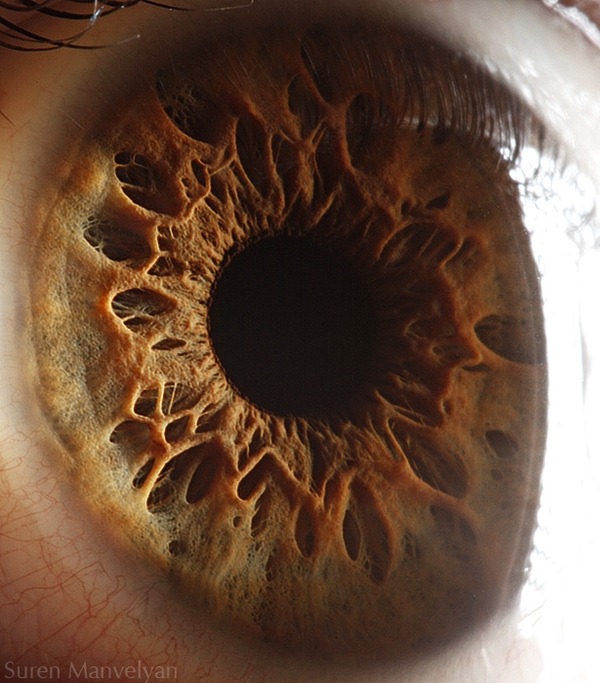I don't think the crystals that form on tobacco are sugar. A long time
ago, I did some messing around with some of the crystals I discovered in
a tin of Virginia, a little analysis, and they did not behave like any
sugar that would be in tobacco. They were not even soluble in water! At
the time, I could neither harvest enough of them, nor did I have access
to the necessary equipment to get a read on what they might be.
But, it does lead to some interesting questions. Whether they are or are
not sugar, why are crystals forming? They could be precipitating out
because of a change in the overal pH, or whatever solvent that held them
captive has transformed into something in which the relative solubility
is different.
Even if they are sugar, there is no chance in hell that the solvent
content, even good old H2O in the tobacco could be anywhere near
saturated.
There are many aspects of the aging process that are not understood. I'm
trying...
-glp
Crwydryn added this:
>>But I have to wonder: if vacuum-sealing retards aging, why do so many people
>>pay so much for vintage vacuum-sealed tins?
>
>It's a partial vacuum. Greg's insights on the topic are too dense for
>me most days, so I don't finish reading them, but I think the basic
>gist of it is that there's two kinds of microbes that are working
>during aging: aerobic and anaerobic. One works in a vacuum (I think
>anaerobic), and the other works only in the presence of air. So you
>need a little air to kick-start the process, and then once the air is
>"used up" in some way, the anaerobic microbes go to work.
er...well, close I guess. Here's a summary for the layman (hopefully
minus Greg's detailed and wonderful density, but still containing the
germ of the idea...so to speak )
Unlike people, not all bacteria need oxygen, and in fact some find it
positively poisonous.
Aerobic bacteria can use oxygen. (basically all living things except
for anaerobic bacteria are aerobic)
Anaerobic bacteria typically don't like oxygen very much.
When the tin is first packed, there is air in the tin, and the air
naturally contains oxygen. The anaerobic bacteria go dormant, sealing
themselves up in spores to protect themselves because to them oxygen
is a poison. The aerobic bacteria are happy, though, and go to work
on the tobacco. To process things in the tobacco into energy, the
aerobic bacteria need oxygen, just like people do. As you know, if
the environment is sealed, the oxygen gradually is used up and
converted into carbon dioxide (among other things). To imagine what
is happening to the aerobic bacteria, think of why the big plastic
bags furniture gets wrapped in are boldly labelled "keep away from
children" - essentially the bacteria uses up most of the oxygen and
starts to suffocate. Luckily, aerobic bacteria can seal themselves up
and go dormant too, and that's exactly what they do.
Once enough of the oxygen has been used up, it's safe for the
anaerobic bacteria to come out of "hibernation" and go to work.
Unlike the aerobic bacteria, the anaerobes have a metabolism that
doesn't use oxygen, so they're just fine, and are very happy digesting
your tobacco in the oxygen depleted environment. This continues until
the tin's seal is broken, at which point oxygen gets in again, and
things go back to the way they were before.
>
>This is also apparently why you shouldn't open a tin partway through.
>You'll stop the aging process right at that point, and start a new
>process when you seal it again.
I have trouble agreeing with Greg about the idea that aging stops at
this point - there is no reason whatsoever that you couldn't begin the
process all over again by simply resealing the container. However, I
do think that odds are good that the result will be different than if
you had left the container sealed for a variety of reasons I won't go
into.
HOWEVER (you can stop reading now if you like - I'm going to get
technical and argue with Greg)
I personally question how much of the process is really attributable
to the bacteria. Consider: if bacteria get into a bottle of wine it
doesn't get better, it gets nasty. Also I don't know of a species of
bacteria that can survive life in 40% ethanol solution, yet whiskey
and brandy get better with age.
There are all sorts of chemical processes going on without needing to
give credit to bacteria. There definitely are bacteria present in
tobacco, and this probably does contribute, but my feeling is that
normal oxidation and other inorganic processes can easily explain the
phenomenon we call aging. In fact, I think that the primary culprit
in the aging process of tobacco is probably a combination of diffusion
and purely inorganic oxidation.
Greg mentioned that he doesn't think the crystals reported by some are
sugar. Well, I think it probably is sugar in some cases, but in most
cases it is probably a combination of volatile organics that have
migrated out of the tobacco leaves as oxidation and other processes
consume water, break down cellulose, that sort of thing. And of
course the action of bacteria contributes to the gradual dehydration
of the tobacco leaf as well. This is what I suspect, of course, not
having done any experimentation really. The main reason I suspect
these things is the simple fact (that I'm taking on faith) that
packing tobacco with a good vacuum retards aging. Unless the aerobic
portion of the process is much more important than the anaerobic
portion (in which case truly long term aging is meaningless) this is
not what I would expect.
Another issue is pressure build up: if bacterial populations are a
major component of the process, I would expect to see gas build-up in
aged tins fairly quickly. Having studied microbiology in university,
and having worked with a variety of commonly occuring bacteria, I
would be very surprised by a culture that *didn't* produce gasses as a
by-product.
Yet another point is the apparent resistance of "cased" tobaccos to
aging. I have yet to see any convincing reasoning why these should be
resistant to aging by bacteria, but would like to see the thinking.
Have there been any detailed posts on the subject on ASP? I don't
remember any.
I would love to see experiments that compare standard packing with
nitrogen packing (eliminating the oxygen without producing a vacuum),
sterilized packaging and vacuum packing. All three would have to be
repeated with sterilized versions as well of course.
I would also like to see "rate of aging" comparisons; does the process
stabilize at some point?
It's a very interesting question, and one I'd like to see more detail
on.
GLP responds:
> I have trouble agreeing with Greg about the idea that aging stops at this
> point - there is no reason whatsoever that you couldn't begin the process
> all over again by simply resealing the container. However, I do think that
> odds are good that the result will be different than if you had left the
> container sealed for a variety of reasons I won't go into.
Indeed. If the microbe hypothesis has any basis, the aerobic bugs are
consuming carbon, mostly in the form of dextrose, I suspect, and
producing their metabolc byproducts, good little machines that they are.
While they are sucking up the O2 in the tin, and coughing out CO2,
they're essentially posioning themsleves. (And, not all bacteria are
spore-forming. There's a good chance that those that we're concerned with
simply die when they run out of gas, so to speak.) When the anaerobic
bugs wake up, they go about their business until there's nothing left to
consume, therefore, nothing left to do. They'll either sporulate or just
die, depending on conditions.
So, if you stop the process, the ecology of the contents is dramatically
different from when it was first sealed. It's unlikely it can be
"restarted." The conditions that started the whole process are different,
the bugs that jump-started it are gone, the pH of the environment is
different, and their food source is likely dramatically depleted.
> HOWEVER (you can stop reading now if you like - I'm going to get technical
> and argue with Greg)
>
> I personally question how much of the process is really attributable to the
> bacteria. Consider: if bacteria get into a bottle of wine it doesn't get
> better, it gets nasty. Also I don't know of a species of bacteria that can
> survive life in 40% ethanol solution, yet whiskey and brandy get better with
> age.
It's certainly more than microbes, though I do figure they play a
significant role. Yeasts are likely involved, and may be the bugs that
start the whole thing, fermenting the sugars. Fermentation stops when the
ethanol level reaches the point where the yeasts can no longer survive in
their vegetative state.
Then, there are purely chemical processes that can take place - the
conversion of alcohols and acids to aldehydes, ketones, esters, that sort
of thing. Wine, whiskey and brandy are reacting both with the chemicals
in the wood of the barrel and also undergoing some gas exchange. Once
bottled, whisky and brandy do not improve, though wine does. I suspect
that some of what's going on in the wine *is* bacterial in nature, and
some is likley due to the very controlled gas exchange through the cork.
In wine, the alcohol concentrations are much lower, and are, in fact,
lower than when the yeasts originally died. Alcohol is hygroscopic, so
it'll absorb water in from the air, and it's volatile, so it'll
evaporate. (Bottles of 190 proof grain alcohol are not 190 proof for very
long once they're opened.) The alcohol content of tobacco after
fermentation is likely very low. If yeasts are involved, they're more
likely to suffocate in their own CO2 than to die from alcohol poisoning.
> There are all sorts of chemical processes going on without needing to give
> credit to bacteria. There definitely are bacteria present in tobacco, and
> this probably does contribute, but my feeling is that normal oxidation and
> other inorganic processes can easily explain the phenomenon we call aging.
> In fact, I think that the primary culprit in the aging process of tobacco is
> probably a combination of diffusion and purely inorganic oxidation.
It's both. It's got to be.
> Greg mentioned that he doesn't think the crystals reported by some are
> sugar. Well, I think it probably is sugar in some cases, but in most cases
> it is probably a combination of volatile organics that have migrated out of
> the tobacco leaves as oxidation and other processes consume water, break
> down cellulose, that sort of thing. And of course the action of bacteria
> contributes to the gradual dehydration of the tobacco leaf as well. This is
> what I suspect, of course, not having done any experimentation really. The
> main reason I suspect these things is the simple fact (that I'm taking on
> faith) that packing tobacco with a good vacuum retards aging. Unless the
> aerobic portion of the process is much more important than the anaerobic
> portion (in which case truly long term aging is meaningless) this is not
> what I would expect.
During aerobic respiration, as the bacteria consume hydrocarbons (sugar)
and O2, they'll produce CO2 and H2O as byproducts. They're not likely
dehydrating the tobacco. If anything, they'll increase the free water
content to some extent. Clearly the crystals are precipitating because of
a change in the concentration of their solvent. Solubility constants
change with pH, with the concentration of other solutes, and so on.
Anything can be precipitating out. The fact that what I observed was
insoluble in water indicates that it's very likely NOT sugar. I question
why a volatile organic would crystalize without some precipitous change
in the chemical environment. If they're bound up when the tobacco is
tinned, why would they suddenly volatilize, only to precipitate in the
surface. I'm not sure I buy that. More likley, changes in pH and solvent
concentrations are just causing something to come out of solution and
crystalize.
Aging seems to change over time. I've experienced tobaccos that are
clearly "over the hill." At some point, improvement, or what we consider
improvement, stops, and degradation begins. Or, perhaps it's always a
race, and things begin to degrade fairly early, just at a slower rate.
The thing that is fascinating is that tobacco stored in bags changes very
little over time. Certainly, there's some "melding" as the volatiles
mingle and dance and sit back down where they will, but that wonderful,
funky aroma associated with long age just never appears. If those esters
are being formed, they're finding their way out of the bag. If the race
condition is a reasonable hypothesis, over time, we'll get the
degradation with none of the benefits of age. That, is a sad thing.
I've never quite looked at it this way, and if there's any truth to this,
storage in permeable membranes is not only not going to help, it can
actually be bad for the tobacco over time. Another experiment calls...
> Another issue is pressure build up: if bacterial populations are a major
> component of the process, I would expect to see gas build-up in aged tins
> fairly quickly. Having studied microbiology in university, and having
> worked with a variety of commonly occuring bacteria, I would be very
> surprised by a culture that *didn't* produce gasses as a by-product.
O2 + sugars -> CO2 + H2O. I've wrestled with this in my head over and
over. I can't think of an answer.
>
> Yet another point is the apparent resistance of "cased" tobaccos to aging.
> I have yet to see any convincing reasoning why these should be resistant to
> aging by bacteria, but would like to see the thinking. Have there been any
> detailed posts on the subject on ASP? I don't remember any.
Many species of bacteria are extremely sensitive to their environment.
Changes in pH will kill them. PG, being basically an alcohol, is likely
quite toxic to many bacteria. (I believe some have claimed that PG is
sometimes used as a preservative in tobacco. This could be true.)
> I would love to see experiments that compare standard packing with nitrogen
> packing (eliminating the oxygen without producing a vacuum), sterilized
> packaging and vacuum packing. All three would have to be repeated with
> sterilized versions as well of course.
That would be interesting. I often wish I had a full lab here. There's SO
much I'd love to investigate...
> I would also like to see "rate of aging" comparisons; does the process
> stabilize at some point?
>
> It's a very interesting question, and one I'd like to see more detail on.
Indeed, it is. Everything I've written could be wrong, though I suspect
there's more than a little "germ of truth" in it. That's the nature of
hypotheses. Through these "arguments," the worst thing that can happen is
that more understanding will emerge. *g*
Cheers,
Greg









 :
:






